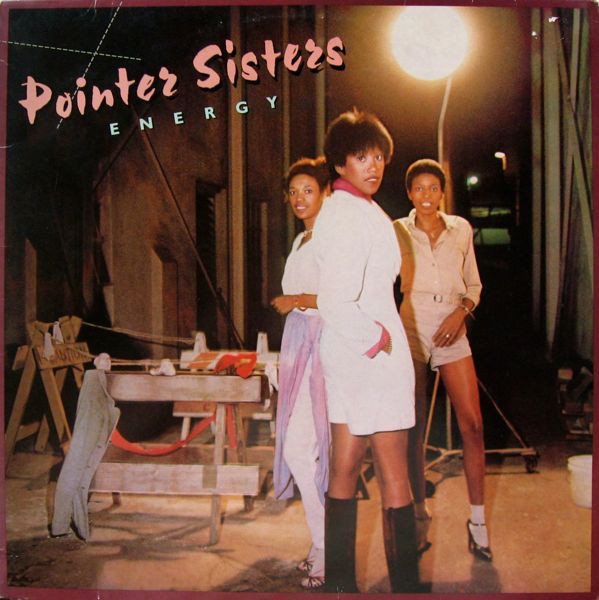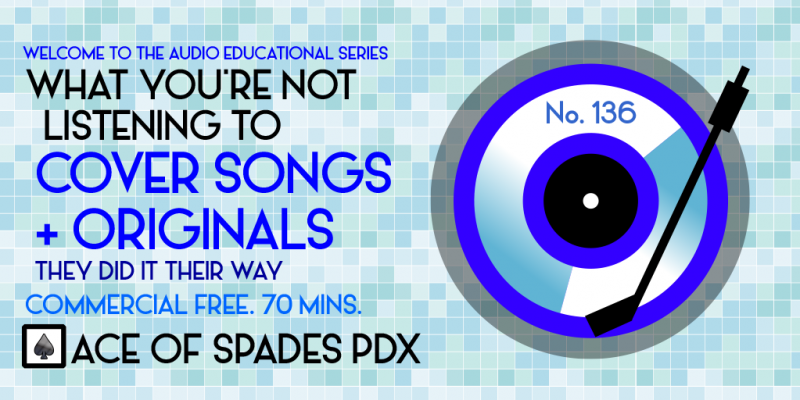Podcast: Play in new window | Download | Embed
The first of what promises to be a semi-regularly recurring feature of this series: Original tracks and cover versions, with each performance standing on its own. #covers
For those of you who have taken college Writing 122, this program may sound a little more than familiar. Today, we are going to use the comparison and contrast method to discern similarities between different types of what appears to be the same media.

Covers, as they have been traditionally called, have been around since the dawn of music performances. Often called “remakes”, this is where one artist records a number often associated with another. Sometimes it is a well-known track; other times, it resurrects a long lost gem.

Now, I know there are those of you out there may be rolling your eyes, and I can’t say I blame you. Often, covers can be bland and sometimes just downright insulting pale imitations of the originals. I know of no one anywhere who believes Pat Boone’s version of Little Richard’s “Tutti Frutti” or Madonna’s cover of Don McLean’s “American Pie” are superior to the originals.

The strange fact of the matter is, sometimes the cover is so radically reworked that it is hard to believe it was never an original song: Ike and Tina Turner’s re-imagining of Creedence Clearwater Revival’s “Proud Mary” or Mitch Ryder and The Detroit Wheel’s transformation of Shorty Long’s “Devil With A Blue Dress On” are cover song gold standards.

I purposely chose tracks that are very well know cover hits so that you can take this opportunity to also hear the amazing, but often very different, originals. There are no virgin births in Rock and Roll children, or pretty much any form of media for that matter. You never know where inspiration will take you. Listen, learn and have a real good time!
First Part
- Fire, 1978, Robert Gordon (with Link Wray), Fresh Fish Special
- Fire, 1979, The Pointer Sisters, Energy
- Never Can Say Goodbye, 1971, The Jackson 5, Maybe Tomorrow
- Never Can Say Goodbye, 1974, Gloria Gaynor, Never Can Say Goodbye
- Midnight Plane To Houston, 1972, Jim Weatherly, Weatherly
- Midnight Train to Georgia, 1973, Gladys Knight and The Pips, Imagination
- Tainted Love, 1965, Gloria Jones, single B-side of “My Bad Boy’s Comin’ Home”
- Tainted Love, 1981, Soft Cell, Non-Stop Erotic Cabaret
- Respect, 1965, Otis Redding, Otis Blue: Otis Redding Sings Soul
- Respect. 1967, Aretha Franklin, I Never Loved A Man The Way I Love You
Second Part
- Summertime, 1936, Billie Holiday, Vocalion 78 RPM single A-side matrix number 19537
- Summertime, 1966, Billy Stewart, Unbelievable
- You Better Run, 1966, The Young Rascals, Groovin’
- You Better Run, 1980, Pat Benatar, Crimes of Passion
- Take Me in Your Arms (Rock Me a Little While), 1965, Kim Weston, 7″ single A-side
- Take Me in Your Arms (Rock Me a Little While), 1975, The Doobie Brothers, Stampede
Finale
- Paranoid, 1970, Black Sabbath, Paranoid
- Der Hund von Baskerville, 1971, Cindy und Bert (with the Jay Five), “Holly Holy” single B-side
Love to you all.
Ben “Daddy Ben Bear” Brown Jr.
Host, Show Producer, Webmaster, Audio Engineer, Researcher, Videographer and Writer
Instagram: brownjr.ben
Twitter: @BenBrownJunior
LinkedIn: benbrownjunior
Design Site: aospdx.com
“Copyright Disclaimer Under Section 107 of the Copyright Act 1976, allowance is made for ‘fair use’ for purposes such as criticism, comment, news reporting, teaching, scholarship, and research. Fair use is a use permitted by copyright statute that might otherwise be infringing. Non-profit, educational or personal use tips the balance in favor of fair use.”
